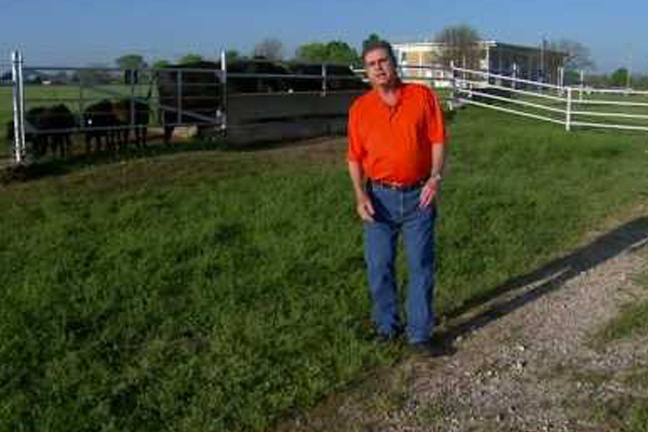
Agricultural News
Selk Recommends Producers Review Spring Calving Season and Start to Make Improvements Now
Tue, 12 May 2015 10:02:22 CDT
 Glenn Selk, Oklahoma State University Emeritus Extension Animal Scientist, writes in the latest Cow-Calf Newsletter.
Glenn Selk, Oklahoma State University Emeritus Extension Animal Scientist, writes in the latest Cow-Calf Newsletter.
Only 1 to 2 months ago the spring calving cows were calving, the temperature was cold and some of the calving pastures were muddy. Experience would say that you do not want to ask cow calf operators how "calving" is then, because the response would be less than objective, reflecting bone-chilling cold and not enough sleep. However if you wait too long, perhaps until this fall, time will have mellowed most of the events and one soon has difficulty matching a calving season with particular problems. Now is perhaps the best time to make a few notes on what to change for next year.
The first step is to list the dead calves. Hopefully, your cattle are in a record system that will provide that information. If not, grab a piece of paper and pencil and list the calves. Your calving notebook should have the dead calves checked off and a brief notation on what happened to each. Until all the calves are listed, the shock of lost opportunities has not had its full impact.
Can you identify a pattern of problems?
Was most of the death loss right at delivery and involved two-year old heifers? This could indicate that sire selection needs to be done more carefully, with attention being paid to low birth weight EPD sires for heifers. Perhaps the heifers were underdeveloped. This could contribute to more calving difficulty than necessary. Do you provide assistance to heifers after they have been in stage II of labor for one hour? Longer deliveries result in stress on both calf and cow.
Was the death loss more prevalent after the calves had reached 10 days to 2 weeks of age? This of course often means that calf diarrhea (or scours) is a major concern. Calf scours will be more likely to occur to calves from first calf heifers. Calves that receive inadequate amounts of colostrum within the first 6 hours of life are 5 to 6 times more likely to die from calf scours. Calves that are born to thin heifers are weakened at birth and receive less colostrum which compounds their likelihood of scours. Often, these same calves were born via a difficult delivery and adds to the chances of getting sick and dying. All of this means that we need to reassess the bred heifer growing program to assure that the heifers were in a body condition score of 6 (moderate flesh) at calving time.
Did you introduce a baby calf from another herd during the calving season? A calf may have been purchased from a neighbor or at a livestock market. Perhaps the new calf was brought home to foster on to a cow that lost her calf. This has been shown to introduce new pathogens into a herd even though the purchased calf appeared healthy. Placing the new calf and foster mother in a separate pen for at least 30 days should greatly reduce the risk of introduction of new diseases into the rest of the calves.
Do you use the same trap or pasture each year for calving? There may be a buildup of bacteria or viruses that contribute to calf diarrhea in that pasture. This particular calving pasture may need a rest for the upcoming calving season. Plus it is always a good idea to get new calves and their mothers out of the calving pasture as soon as they can be moved comfortably to a new pasture to get them away from other potential calf scour organisms. A complicated, but effective method of curtailing calf diarrhea outbreaks in larger herds is the "Nebraska Sandhill Calving System". Read more about this at the following website: https://beef.unl.edu/beefreports/symp-2007-17-xx.shtml
Pre-calving scours vaccines (to the cows) may be recommended by your veterinarian for next winter and spring. This should be considered an important short-term plan to reduce the incidence of calf diarrhea. The above suggestions are more long-term solutions to the problem.
WebReadyTM Powered by WireReady® NSI
Top Agricultural News
More Headlines...




















